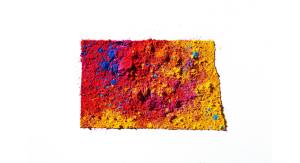Michigan State creates first 3-D fingerprint
A team of computer scientists at Michigan State University has built the first three-dimensional model of a human fingerprint using a 3-D printer, the university recently announced.
The hope is that the development will help in today’s fingerprint-matching technology used by law enforcement organizations as well as lead to improvements in security.
Anil Jain, a distinguished professor of computer science and engineering at the school, led the research. He was joined by a team of students and professors from Michigan State along with Nick Paulter, a research collaborator with the National Institute of Standards and Technology.
The project developed a method that takes a two-dimensional image of a fingerprint and maps it to a 3-D finger surface, complete with all the ridges and valleys that make fingers prints unique thanks to the 3-D printer.
It creates what Jain’s team called a fingerprint phantom.
Imaging phantoms are common in the world of medical imaging. For example, to make sure an MRI machine or a CT scanner is working properly, it needs to first image an object of known dimensions and material properties.
“In health care, a 3-D heart or kidney can be created,” Jain said. “Because the dimensions are known, they can be put into a scanner and the imaging system can be calibrated.”
In this case, the ultimate goal is to have a precise fingerprint model with known properties and features that can be used to calibrate existing technology used to match fingerprints.
“When I have this 3-D fingerprint phantom, I know its precise measurements,” Jain said. “And because I know the true dimensions of the fingerprint features on this phantom, I can better evaluate fingerprint readers.”
The work is funded by a grant from the Measurement Science Program at NIST.





